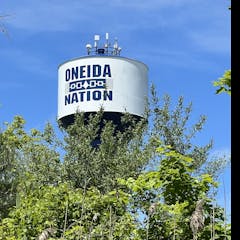
Articles on Indigenous-led
Displaying all articles

To First Nations women, ‘care’ is more broad and all-encompassing than traditional definitions. We need a new approach to capturing, and appreciating, their work, paid and unpaid.

Aboriginal Elders play an important role as community leaders and cultural knowledge holders. Supporting this aspect of ageing well is crucial.

Indigenous women are using sustainable tourism to overcome generational challenges and as an entrepreneurial means of generating income.

Water sharing arrangements have the potential to enhance water security, but they require strong communication and co-ordination between community leaders in addition to adequate financial support.

As protected and conserved areas increase, an equity-based approach that respects Indigenous rights can help bring the transformative changes we need to halt and reverse biodiversity loss.

To address the climate and biodiversity crises, we must stop criminalizing Indigenous Peoples for exercising their treaty rights and start upholding them instead.

An Indigenous-led effort to increase caribou abundance and cultural practices like hunting is successfully increasing the caribou population

Parks and refuges are important for conservation, but without connections, they’re like islands. Linking them by protecting land in between makes it possible for wildlife to move over bigger areas.

Rather than sitting in the back seat, Indigenous Australians must be up front in managing the recovery of Australia’s unique and precious environment.

Conservation must be carried out by local communities to be most effective, new research shows.

Universities must meaningfully acknowledge they are sited on unceded First Nations land and Indigenous culture should be recognised in campus design. These steps are vital for reconciliation.

The Māori world view provides a viable framework for building a new tourism model that prioritises quality over quantity.

While investments are important, what’s more important is the process and mechanisms through which Indigenous people access funding.
